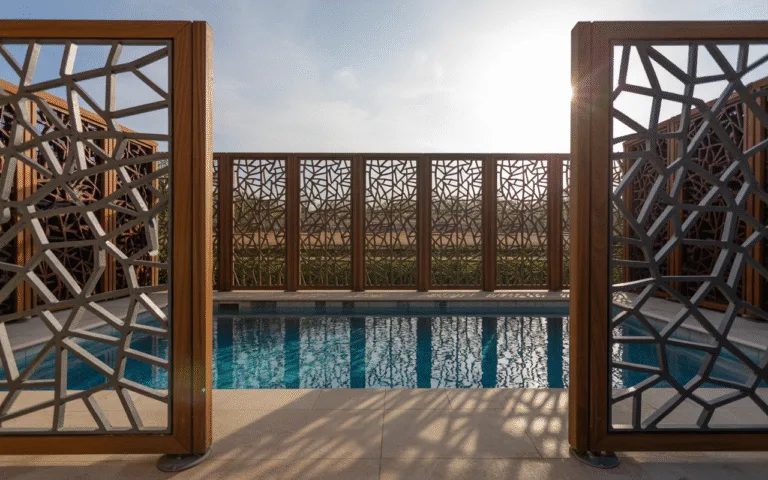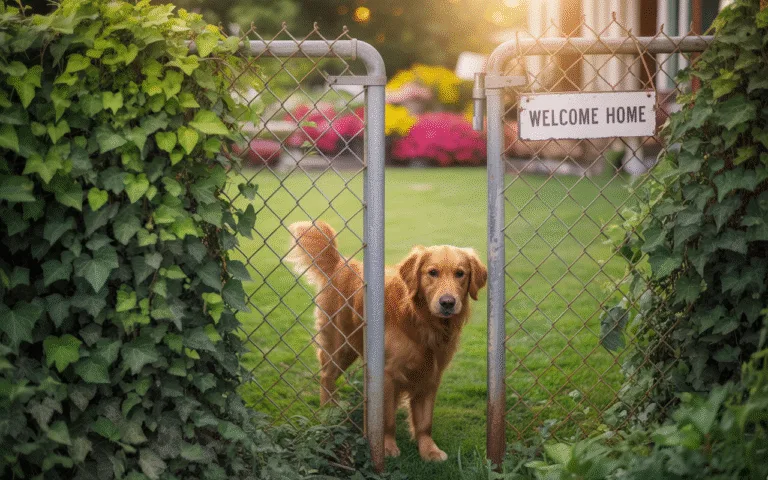16 Backyard Playground Ideas That Are Totally Doable (and Super Fun!)
Hey there, fellow backyard dreamer!
So, you’re thinking about turning that patch of grass out back into a mini adventure zone for the kids (or maybe for the kid in you, no judgment here!).
Great call! Because honestly, a backyard playground isn’t just a space to play; it’s where memories are made, mud pies, scraped knees, belly laughs, and all.
If you’re looking for realistic, budget-friendly, and creative backyard playground ideas, you’re in the right spot.
I’m going to walk you through 17 practical and fun ideas that I’ve either tried myself or seen work brilliantly. Let’s jump in!
Why Backyard Playgrounds Matter
Okay, first off, let’s talk about why this even matters.
Because I get it, life is busy, screens are everywhere, and you might be wondering if you really need a jungle gym in your backyard. But hear me out:
- Backyard playgrounds encourage outdoor play, which means less screen time.
- They give kids a safe and convenient place to burn off energy (hello, better sleep!).
- They’re a great way to build independence, creativity, and confidence.
- And honestly? They’re fun. Like, really fun.
Even a small DIY setup can make a huge difference in your kid’s day, and yours, too!
1. DIY Climbing Wall

A backyard climbing wall is hands-down one of the most exciting and active playground features you can add.
Here’s why I love this one:
- You can customize the height based on your kids’ ages.
- It promotes physical strength, coordination, and courage.
- You don’t need a massive space or fancy tools.
What you’ll need:
- A sturdy plywood board (treated for outdoor use)
- Climbing holds (they come in kits!)
- Lag screws and a drill
Design Tips:
- Add fun shapes or paint a mural behind the holds.
- Keep a soft landing, rubber mulch, sand, or gym mats work great.
2. Sensory Garden Path

This one’s a personal favorite, especially for younger kids who love to explore with their hands and feet.
A sensory garden path is a multi-textured trail that kids can walk on barefoot. It’s relaxing, fun, and surprisingly easy to set up.
Materials you can use:
- Pebbles
- Sand
- Wood chips
- Smooth stones
- Artificial grass
- Bark or leaves
Why it’s awesome:
- Encourages tactile development and balance
- Easy to switch materials out as seasons change
- You can shape it into a spiral, winding path, or circle
Pro Tip: Border each section with wooden planks to keep everything in place!
3. Backyard Obstacle Course

Now this one is a total hit in my house. We created a backyard obstacle course with stuff we already had, and the kids went nuts for it.
Here’s what we used:
- Pool noodles (bent into arches)
- Hula hoops (for jumping or crawling through)
- Old tires
- Ropes for tug-of-war or climbing
- A balance beam (just a painted 2×4!)
Why it rocks:
- You can rearrange it every week to keep it exciting.
- It’s great for birthday parties and playdates.
- Encourages problem-solving and fitness, double win!
Parent tip: Time your kids and have mini competitions. It’s hilarious and motivating!
4. Swing Set (With a Twist)

Swings are a classic for a reason, but you don’t have to stick to the usual single swing and frame.
Here’s how to upgrade your swing game:
- Add a nest swing (aka saucer swing) for group fun.
- Install a disc swing or rope swing on a sturdy tree.
- Try a hammock swing for more chill vibes.
Why swings are essential:
- Great for vestibular development (that’s balance and motion awareness).
- Swings help kids relax and self-regulate emotionally.
- They’re just plain fun for all ages.
Safety note: Make sure to anchor everything securely and use soft ground padding.
5. Mud Kitchen Station

Yes, this is exactly what it sounds like, and if you haven’t seen one, look it up right now because it’s adorable and functional.
A mud kitchen is a pretend outdoor cooking station using dirt, water, old pots, and pure imagination.
Here’s how we built ours:
- Used an old wooden shelf as the base
- Installed metal bowls for “sinks”
- Added hooks for spoons, pans, and measuring cups
- Painted it with chalkboard paint for a fun, writable surface
Why I swear by it:
- Encourages creative, messy play (in the best way)
- Keeps little ones engaged for hours
- Uses mostly recycled stuff from around the house
6. Chalkboard Fence or Wall

Okay, this one’s a super quick win that adds a creative twist to your yard.
Instead of covering your fence with vines or decor, why not turn it into a giant outdoor chalkboard?
What you’ll need:
- Smooth plywood or concrete wall space
- Outdoor chalkboard paint
- A bucket of chunky sidewalk chalk
Why it’s brilliant:
- Gives kids a huge surface for creativity
- Easy to clean and repaint
- Great for all ages, from doodling to practicing letters
Tip: Attach a little shelf or basket for chalk and sponges so everything stays organized!
7. Teepee or Tent Hideaway

You don’t need to go full treehouse to give your kids a cozy little retreat. A simple teepee or outdoor tent creates a magical escape for reading, relaxing, or imaginative play.
How to do it:
- Use PVC pipes or bamboo poles as the frame
- Drape canvas or weather-resistant fabric over it
- Decorate with fairy lights, pillows, or rugs
Why it works:
- Offers shade and a quiet place to unwind
- Sparks imaginative adventures (pirate hideout, anyone?)
- Can be moved or packed away easily
Bonus Idea: Create a “reading nook” inside with weather-safe books and lanterns!
8. Water Play Station

This one is a must for hot summer days, and honestly, adults can’t resist joining in, either.
A water play station can be as simple or fancy as you want. You can:
- Use a water table
- Repurpose an old sink or bin
- Create a DIY PVC sprinkler setup
Add-ons for fun:
- Funnels, measuring cups, and plastic toys
- Ice blocks for sensory play
- Food coloring for extra visual fun
Why it’s amazing:
- Keeps kids cool and entertained for hours
- Perfect for toddlers and older kids alike
- Encourages STEM learning through play
Heads-up: Place the water station on grass or deck for easier cleanup and drainage.
9. Zip Line for Kids

Alright, this one sounds wild—but hear me out. A kid-friendly zip line can be surprisingly simple and super fun if you’ve got just two solid anchor points (like trees or posts).
Why this is a winner:
- Gives your kids a thrilling experience without leaving the yard
- Encourages balance and coordination
- Feels like an amusement park ride—without the long lines!
What you’ll need:
- A secure zip line kit (they’re made for backyards!)
- Two strong anchor points
- Safety gear like helmets and harnesses
Tips for Safety:
- Keep the ride low to the ground for young kids
- Use soft mulch or grass under the line
- Always supervise while it’s in use
Heads-up: If you install this, prepare to be the most popular house on the block.
10. Giant Outdoor Jenga or Yard Games Area

This is one of those ideas where everyone—kids, teens, adults—gets in on the action. I set up a little game corner last summer, and it totally transformed how we use our space.
Game ideas you can add:
- Giant Jenga
- Bean bag toss (Cornhole)
- Ring toss
- Lawn bowling
- Giant Connect Four
Why it’s awesome:
- Great for family nights, BBQs, and playdates
- You can DIY many of these with wood scraps
- Helps kids with hand-eye coordination and social interaction
Design Tips:
- Lay down an outdoor rug or rubber mat to define the area
- Use a storage bench to keep everything organized
11. Nature Art Station

Got a little artist at home? This one’s a creative, calming addition to your outdoor space that uses what’s already out there—leaves, sticks, stones, and petals.
How to set it up:
- Use a small table or bench
- Add baskets or trays for collecting nature materials
- Keep a bin of washable paints, glue, and brushes nearby
Why it’s magical:
- Encourages creativity through natural materials
- Teaches kids to observe and appreciate nature
- Great for quiet time or sensory breaks
Pro Tip: Install a corkboard or clip system to display their masterpieces!
12. DIY Sandbox with a Lid

A sandbox is a classic—but adding a lid changes the game. No soggy sand, no curious critters, and no surprise “gifts” from neighborhood cats.
Why a lidded sandbox is better:
- Keeps the sand dry and clean
- Doubles as a seat or table when closed
- Can be built to fit your space perfectly
What to include:
- Buckets, shovels, sifters
- Molds and trucks
- Measuring cups and spoons for sensory play
Design Idea: Paint the lid with chalkboard paint to turn it into a drawing surface!
13. Mini Rock Climbing and Slide Combo

This is like combining two playground favorites into one compact design. A rock wall that leads up to a mini slide? Instant win.
Why I love this combo:
- Adds vertical movement and dynamic play
- Doesn’t take up much space
- You can adjust the difficulty with different grip placements
Key features to include:
- Sturdy wooden or plastic frame
- Durable climbing holds and slide ramp
- Cushioned area at the bottom (mulch, rubber, or grass)
Tip: Build it next to the climbing wall if you’ve already added one. Instant mini jungle gym!
14. Outdoor Musical Wall
This one is equal parts fun and educational. Create a wall or fence panel that lets your little ones bang, clang, and chime their way through outdoor music time.
What to use:
- Old pots and pans
- Metal lids and cookie sheets
- PVC pipes for xylophones
- Wooden spoons and rubber mallets
Why it’s a hit:
- Encourages creative expression and rhythm
- Easy to make with recycled materials
- Works for toddlers and older kids alike
Pro Tip: Use zip ties or hooks to attach everything securely. And yes—earplugs are optional but recommended.
15. Backyard Camping Station

You don’t need to drive into the wilderness for a good old-fashioned campout. Set up a designated backyard camping spot and you’re good to go—s’mores included!
What you’ll need:
- A tent (or DIY blanket fort)
- Sleeping bags or camping mats
- Lanterns or fairy lights
- Fire pit or portable grill (with supervision, of course!)
Why this is great:
- Fosters independence and a love for nature
- Perfect for summer nights or pretend play
- It’s a screen-free adventure in your own backyard
Parent tip: Add storybooks or constellation guides for a fun learning twist.
16. Balance Play Trail

Kids love testing their balance—and this gives them the perfect space to wobble, step, hop, and giggle safely.
How to create a balance trail:
- Use cut logs, painted 2x4s, or stone pavers
- Make zigzags, circles, or simple straight lines
- Add low stepping stumps or ropes for variation
Why it’s awesome:
- Improves core strength and motor skills
- Kids can create their own path layouts
- Great for group races or solo challenges
Design Tip: Paint each beam or log a different color for visual appeal and play prompts!
17. DIY Outdoor Stage

This one’s for the drama queens and kings (and every little rockstar or storyteller in between). A small stage setup sparks endless imagination—and some serious giggles.
How to build it:
- Use wooden pallets or a raised platform
- Add curtains or a sheet backdrop
- Decorate with string lights or handmade signs
Why this rocks:
- Encourages public speaking and creativity
- Great for performances, puppet shows, or dance parties
- Can double as a photo booth or picnic area
Bonus Idea: Keep costume bins nearby with scarves, hats, and fun props!
Common Mistakes to Avoid
Even with the best ideas, a few missteps can make your playground less safe or less fun. Here are some things to watch for:
- Skipping safety checks – Always secure swings, climbing structures, and beams.
- Using the wrong materials – Avoid untreated wood or slick surfaces.
- Not considering drainage – Especially for water or sand play zones.
- Overcrowding the space – Leave room to run and play between stations.
- Forgetting age-appropriate design – What works for toddlers may not work for 10-year-olds.
Tip: Test everything yourself before letting kids loose. If it feels shaky to you, it definitely is for them!
FAQ
How much space do I need for a backyard playground?
You don’t need a huge yard! Even a small backyard can accommodate fun features like a mud kitchen, chalkboard wall, or teepee. Prioritize multi-use items and open space for running around.
What’s the safest ground cover for kids?
The best options are:
- Rubber mulch (softest, long-lasting)
- Wood chips (budget-friendly, natural look)
- Sand or pea gravel (great under swings or slides)
Always avoid concrete or asphalt where kids might fall!
Can I build a playground on a budget?
Absolutely! Many of the ideas here can be done with repurposed materials, old shelves, scrap wood, even pool noodles. DIY saves a ton, and kids don’t care if it’s fancy, just fun.
How do I maintain the playground?
Regularly check for:
- Loose bolts or screws
- Worn ropes or swings
- Splinters or cracked boards
Also, clean water and mud stations weekly, and refresh soft surfaces like mulch as needed.
What age group are these ideas best for?
Most of these ideas work for toddlers to preteens, depending on how you size and design them. Always adjust heights and safety features to suit your child’s age and abilities.
Final Thoughts
Building a backyard playground doesn’t have to be expensive, complicated, or Pinterest-perfect.
With a little creativity (and maybe a few elbow grease Saturdays), you can turn your outdoor space into a joyful, safe, and exciting place your kids will love, and remember forever.
And hey, if you end up testing the obstacle course yourself… I won’t tell anyone. 😉





